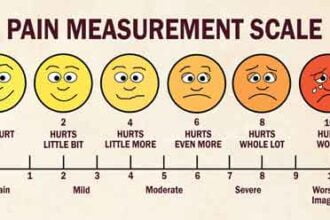One of the interesting things I learned in business school is that not only is it typical for a business to earn 80 percent of its profits from 20 percent of its customers, but that 75 percent of its customers may represent 120 percent of its profit. In other words, not only are some customers more profitable than others, but a fair fraction of the customer base is unprofitable. This kind of pattern is evident in a normal (i.e., non-health care) business. The main drivers are usually cost of customer acquisition and cost to serve. For example, some customers demand a lot more service than others and some customers that cost a lot to bring on only buy once. Price is usually a secondary factor, with more powerful or shrewder customers negotiating discounts. Once businesses understand their true costs and profitability by customer segment they can take steps to improve profitability. For example, if customers recruited through advertising on Facebook are unprofitable, the company can advertise elsewhere. If some customers use a lot of service, the company can start charging for service explicitly. Health care is a lot weirder than that, as Ambulance-Bill Chasing in the Sunday Boston Globe Magazine illustrates. A non-health care person wrote about how he tried to understand the bills for his mother’s ambulance rides to and from the hospital. The more he dug, the more bewildered he became:
As a reporter, I’m used to dealing with complex material, but this drive down one of the countless, curvy roads that merge into the Health Cost Superhighway left me both more informed and more confused. Maybe it really is easier to remain clueless and indifferent about our medical bills. The alternative, as a friend who has spent decades in the health care trenches told me, is “to be clueless and terrified.”
The gist of the story is:
- A public (Town of North Andover) ambulance charged $650 for a 4-mile trip to the hospital. Medicare and supplemental insurance will pay $316 and $79 respectively, or $395 in total
- A private (Patriot) ambulance charged $1153 for the return trip. Medicare won’t pay, because it doesn’t consider such trips medically necessary, and Patriot is apparently allowed to charge his mother the full amount. However, they are only planning to charge her $257
Here’s the interesting nugget:
So if Patriot is unlikely to collect its initial steep fees, why bill for them in the first place? Because in this Alice in Wonderland health care world, some people actually do pay them. Car insurance companies, for example, may cut such checks when their clients are in accidents, a windfall [the ambulance company owner] says he needs to offset lower payments from Medicare.
The example here isn’t particularly extreme, because the $1153 for Patriot is only about 3x what Medicare pays. It’s not unusual to see health care charges at 5x negotiated rates. What’s interesting is that there are still quite a few health care businesses that operate in this mode, earning a modest margin on their core business that’s reimbursed by Medicare and commercial insurers with which they have contracts, losing money on the fairly high percentage of patients who don’t pay anything –either because they’re uninsured or just don’t pay–, and making almost 100 percent of their profit on the occasional out-of-network sucker whose insurance pays full boat or who actually pays the bill himself or herself. Some ambulance companies operate in that mode as do other businesses, such as kidney dialysis centers and providers of mail order medical supplies. It’s not healthy to operate in such a skewed mode, where the normal 80/20 rule cited above doesn’t apply. Price transparency and consumer-directed plans can make some impact here. However, global capitation would be even more effective. Not only would it give provider systems (such as Accountable Care Organizations) the incentive to negotiate with ambulance companies and their ilk, it could also encourage a more rational view on utilization. If that ambulance trip home really wasn’t medically necessary, why not call a cab instead for $10? Even throw in a nurse or attendant for another $50 or $100 to help mom get settled back into the home…





